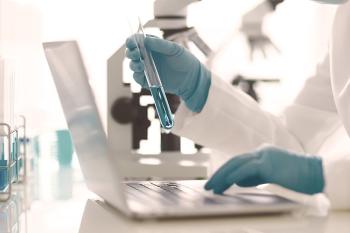Highly Potent API Demand is On the Rise
HPAPIS Very Effective at Small Doses
Small But Mighty - Highly potent active ingredients (HPAPIs) are remarkably effective at small doses. Therapies including oncology, hormones, narcotics, musculoskeletal treatments and retinoids all utilize these compounds. By 2018, the market for HPAPIs is expected to reach over $17 billion, and although the majority of high potency products are manufactured in Western countries many companies around the world is investing in highly sophisticated facilities in order to participate in this lucrative field.
A compound's occupational exposure limit (OEL) is often established using toxicology information from scientific literature in additional to toxicology studies. APIs with an OEL of 10µg/m3 or less are considered highly potent compounds. The exposure limit of a known compound can be determined based on the lowest therapeutic dose, other factors that have to be considered include whether the API is in liquid or powder form, the process of formulation, as well as the frequency of contact. Often, new developmental products may not have toxicity information available. Currently there is no official guidance for the safe handling of highly potent compounds; therefore companies create their own categorization. Since containment varies depending on the toxicity of the product, the handling requirements will also differ greatly. Numerous companies utilize SafeBridge Consultants and their classification system, while many have developed their own, based on their equipment and facilities.
Investment Into HPAPIs
Many companies have been making strategic deals and investments into high potency manufacturing since it requires people with specific expertise in addition to highly specialized equipment. A lot of high potency manufacturing is kept in house, but over the past few years there has been significant outsourcing of HPAPI manufacturing from big pharma to contract manufacturing organizations (CMO). Often it can be more economically practical to outsource as resource demands and the level of specialization needed increases for small volumes HPAPI. There are also significant challenges with manufacturing HPAPIs. The facilities require high containment technologies, and there is significant cost in specialized equipment. For companies getting involved, the barriers to entry include a lack of guidance in design, limited skills outside of big pharma, and high operating costs.
The acquisition of Carbogen-Amcis supported Dishman's construction of a commercial HPAPI manufacturing site in India. Sigma-Aldrich Fine Chemicals and Fresenius Kabi have each made significant investments into their facilities for handling HPAPIs. Aesica opened a high potency granulation facility in 2012 and announced plans to invest in HPAPI manufacturing as well. Novasep invested €3 million in their HPAPI production capabilities at their facility in France; while Evonik has invested in both their high potency laboratory space and kilogram facility and Lonza has plans to double the existing capacity handling HPAPIs as well.
Prospects for the Market
Analysts estimate that 25% of the drugs in development globally are highly potent. As medicine becomes more specialized, the number of highly potent drugs being developed will likely increase. It is also expected that competition will drive new technological developments and more high potency manufacturing will be developed in high growth regions of Asia, such as India and China. There are numerous HPAPIs that are losing patent protection in the next few years as well, which will likely drive more generic companies' investment into high potency manufacturing or partnerships to develop these products.
As more drugs are created with higher pharmacological activities, the market will continue growing. More companies will decide the initial investment to develop their capabilities will be worth it, as the market for high potency products grows. While some advancements in manufacturing technology, such as single-use production, could see additional HPAPI manufacturing being kept in-house. The lack of a universal regulatory framework for handling HPAPIs will continue to be a challenge. Those companies with extensive knowledge in the field will continue to dominate the high potency manufacturing space, and the continued demand for such products will compel more companies into this highly technical arena.
Kontakt
Thomson Reuters
215 Commercial Str.
Portland, Maine 04101
+1 207 8719700
+1 207 8719800












